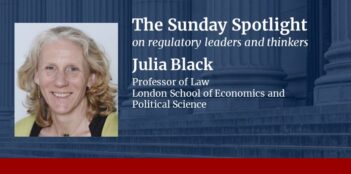
An Education Department proposal paves the way for a new normal in online instruction.
Across the United States, empty college classrooms and evacuated campuses lie in wait for students’ return. When classes do resume, they may not be as full as they once were.
The U.S. Department of Education recently released a new proposed rule on distance education that could alter online learning, correspondence, and study abroad programs long after ongoing social distancing practices have ceased. These changes are made pursuant to Title IV of the Higher Education Act of 1965 (HEA). The HEA provides federal money to students and institutions of higher learning via grants, scholarships, loans, and other forms of support. Title IV authorizes student financial aid programs that are the main source of direct federal support for most students in postsecondary education.
The proposed rule is part of a broader deregulatory push by the Department.
The proposal would, among other things, reduce regulatory barriers for institutions seeking to implement online programs.
Citing the Education Department’s historic inability to “keep pace” with developing technologies and other innovations in education, the 65-page proposal would amend various parts of the HEA’s general and eligibility-related requirements to provide schools greater flexibility in administering distance education programs. This goal is achieved largely through clarifying and amending definitions of statutory terms like “distance education” and “credit hour” to account for technological innovations while ensuring that these updated definitions are still compliant with the language and intent of Title IV.
For example, the proposed revision to the definition of “distance education” would eliminate references to technologies such as DVDs and CD-ROMs used to facilitate interaction between students and instructors. Instead of listing the various technologies, the proposal replaces them with the words “other media”—broader statutory language that encompasses current and future technology changes in distance learning.
The proposal would for the first time define “substantive interaction”—a commonly stated goal of distance education—as requiring at least two of the following: direct instruction, assessment, or feedback on students’ work, information on or responses to questions of course content or competency, or “other instructional activities” approved by an accrediting agency.
Similarly, the Department’s proposal notes that ambiguities around the definition of “clock hour”—which presumed any non-correspondence instruction occurred in a classroom or other physical setting—have led to confusion over whether regulations allow distance education courses to use clock hours for Title IV purposes.
The Department suggests that technological innovations have made this physical setting assumption false and that the definition requires updating to account for distance education. The Department proposes defining a distance education “clock hour” as 50 to 60 minutes in a 60-minute attendance window of “synchronous” (that is, not necessarily in-person) class, lecture, or recitation providing an opportunity for direct student-instructor interaction. Furthermore, the proposal would require that an institution be technologically capable of monitoring a student’s virtual attendance in 50 out of 60 minutes of each clock hour in the distance education program.
The Department also proposes expanding the definition of a “credit hour” by allowing institutions to consider a “variety of delivery methods, measurements of student work, academic calendars, disciplines, and degree levels” in determining what constitutes a credit hour. This broader definition is supposed to emphasize student learning over “seat time” requirements and provide flexibility in measuring credit hours across different types of educational models, such as a campus lecture-based model or an online model. The Department initially wanted to eliminate the time-based requirements of a credit hour altogether.
The proposal would then provide greater flexibility to institutions on the clock-to-credit hour conversions that clarify how homework time is counted.
The definition of “correspondence course” would be updated to account for modern practices such as team teaching or graduate student-led instruction and grading. The proposed rule would remove old language suggesting that correspondence courses are largely self-paced, as the Department does not consider whether instruction is self-paced when distinguishing a correspondence course from a distance education course. The Department instead evaluates the level of interaction between students and instructors, so the reference to self-pacing is “unnecessary and confusing,” the Department claims.
The distance education rules also tackle education programs outside the United States. The proposal would provide that students of foreign institutions may complete up to 25 percent of an eligible program at a U.S. institution. The proposal would make an exception for some doctoral candidates conducting dissertation research in the United States, allowing them to spend up to a year at a given U.S. institution.
The proposal would also ease restrictions on the ability of eligible foreign institutions to allow U.S. students to take courses at otherwise “ineligible” entities. Eligible institutions could allow ineligible ones to provide some instruction as long as the ineligible entities are accredited for postsecondary instruction in their home countries and provide no more than 25 percent of the eligible school’s educational program. The Department has emphasized the importance of these new provisions for students temporarily unable to attend courses abroad because of the COVID-19 pandemic.
Secretary Betsy DeVos lauded the proposal in a press release, saying that the new standards “embrace new technology,” are “responsive to current realities,” and will “expand access for students to the flexible, relevant education opportunities they need.” The Department contends that the proposed changes will better accommodate the proliferation of nontraditional education routes that an increasing number of students pursue.
The Department has also noted how the COVID-19 pandemic underscores the importance of these new regulations and the flexibility they may provide in light of changing circumstances.
Some experts worry, however, that the Department will reverse course and weaken the rules governing interaction standards and the outsourcing of programs, potentially lowering the quality of instruction across programs.
Prior to the proposal’s 30-day comment period, which closed last week, observers noted that stakeholders such as colleges and universities, which are currently focused on supporting students during the COVID-19 pandemic, may not have been able to provide meaningful input in such a short time window.
The Department states that it plans to issue a final rule by November 1, 2020.



